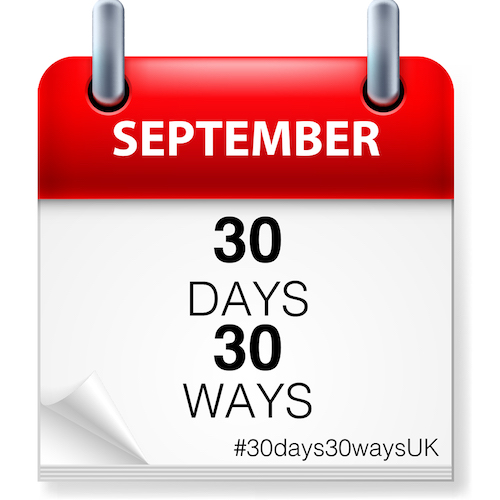September is Preparedness Month
August 2021: Monika Al-Mufti describes the month-long campaign that involves an all-hazard themed daily programme, collaborated on and shared by a wide range of stakeholders and officials, NGOs and advocates.

Major flooding, deadly heatwaves, destructive wildfires, most bearing the much-used attribute of ‘unprecedented’, as well as the Covid pandemic – we are in a relentless climate emergency and public health crisis. The losses in lives and livelihoods, as well as property and infrastructure, are staggering. Tragically, there will be more.
A whole-of-society approach to resilience so that individuals, businesses and organisations all play a part is key. This is advocated in the UN Sendai Framework for Disaster Risk Reduction 2015-2030. In the UK, it is now officially supported by the Integrated Review 2021, where: “As part of this we will improve communication to the public on preparedness.” But what does that mean and what does it look like?
Preparedness, like all concepts, is socially constructed and meanings change over time. Perhaps good examples here for emergency planners are the evolving nature of ‘command and control’ or ‘recovery’ – or rather ‘the recovery myth’, as Professor Lucy Easthope reminds us in her book.
In terms of preparedness, it is vital to decouple from the frontier or Cold War past and construct a meaning fit for our shared world today. A good start is the UNDRR 2017 definition where preparedness is: “The knowledge and capacities of governments, professional response and recovery organisations, communities and individuals to effectively anticipate, respond to, and recover from the impacts of likely, imminent or current hazard events or conditions. For instance, installing early warning systems, identifying evacuation routes and preparing emergency supplies.”
Communicating ‘preparedness’ to the public in an inclusive and supportive way can be tricky. Using the right words can have a significant effect on people’s behaviour, as Jeannie Barr, Director for Professional Standards and Learning at the Emergency Planning Society recently wrote (CRJ 16:2, June, 2021). In a similar vein, using and thus positively constructing and reinforcing ‘preparedness’ is important. After all, as the adage goes: “Resilience is a culture of preparedness.” The word is intrinsically empowering, confidence and trust building first at a personal and familial level, soon radiating outward as interconnectedness is grasped and diverse risks are better understood.
So, how do we wrap this all up into a modern and adaptable communication strategy that reaches wide audiences at little or no extra cost? As per our introductory article, Social media for emergency risk communication (CRJ 14:3, June, 2019) one approach is the social media ‘September is Preparedness Month’ campaign. Internationally, hashtags in line with ISO alpha-2 country codes are in use or emerging. In the United Kingdom, #30days30waysUK has been in use increasingly since 2015 reaching in excess of 12 million people. Here, a structured all-hazard themed daily programme is collaborated on and shared by a wide range of stakeholders and officials, as well as NGOs and advocates.
September may seem just around the corner but it’s not too late to join, no matter where in the world you are. Check out the UK and international intro video via the ‘about us’ page and access this year’s resources via the ‘partners’ page here.
Monika Al-Mufti is co-founder of @30days30waysUK